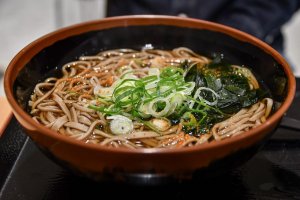What are the best Soba Noodle substitutes?
Are you looking for a substitute for soba noodles? Say goodbye to the same old soba noodles and try these 7 delectable alternatives that are both healthy and bursting with flavor! Whether you’re looking to cut down on carbs or experiment with new ingredients, these substitutes will add a fresh twist to your favorite dishes.
Try using: Udon Noodles, Rice Noodles, Zucchini Noodles (Zoodles), Somen Noodles, Shirataki Noodles, or Buckwheat Pancakes.
Remember that the flavor and texture may vary with these substitutes, so consider the specific recipe you’re working with when choosing the best one.
What are Soba Noodles?
Soba noodles are a type of Japanese noodle made from buckwheat flour, or a combination of buckwheat and wheat flour. They are thin and long, and actually resemble spaghetti. They also have a slightly nutty flavor.
There are acutally several different types of soba noodles, including zaru soba (cold soba noodles served with a dipping sauce), kake soba (served in a hot broth), and kitsune soba (topped with fried tofu). So it doesn’t matter if you are preparing a hot or cold dish there should be something there for everyone. Generally soba noodles are served cold in the summer and hot in the winter.
Soba noodles are considered a healthier alternative to some other types of noodles as they are a good source of nutrients like fiber, protein, and various vitamins and minerals.
They are an integral part of Japanese cuisine and are often associated with Japanese New Year’s traditions, where it’s consumed for good luck and longevity.
Always cook soba noodles in boiling water until until they are just tender and then rinsed with cold water to stop the cooking process. This helps maintains their unique texture.
Use soba noodles in dishes such as soups and stir-fries, or served cold on salads. They offer a unique taste and are a favorite among those seeking a healthier noodle option due to their nutty flavor and nutritional benefits.
Okay, before we look at your soba noodle substitute options, let’s deal with that empty cupboard situation!
Where can I buy Soba Noodles?
If you want to be more prepared and ensure you don’t run out of soba noodles, then you should stock up now.
Nowadays, most delicatessens and general supermarkets stock a wide variety of soba noodles. Or if you prefer you can also purchase soba noodles on-line.
So why not jump on and place your order today.
STOCK UP NOW!
Delicious organic soba noodles made from wheat and buckwheat flour. Soaks up all the flavor and doesn’t get soggy. Easy portioning. Excellent for hot or cold dishes.
USDA certified organic. Kosher friendly.
What can I substitute for Soba Noodles?
Here are some of the best ingredients to substitute the flavor and role that soba noodles provide in your recipes.
- Udon Noodles
- Rice Noodles
- Zucchini Noodles
- Somen Noodles
- Spaghetti
- Shirataki Noodles
- Buckwheat Pancakes
Soba Noodle substitutes
Udon Noodles
Udon noodles are a type of thick and chewy Japanese wheat noodle. They are made from wheat flour, salt, and water, and they have a neutral flavor and a texture which is quite soft and doughy. Udon noodles are quite versatile and can be used in a variety of dishes.
You can use udon noodles as a replacement for soba noodles, but be aware that they have a different texture and flavor. Here’s some ideas when it might work quite well as a substitute:
- Udon noodles are an excellent choice for replacing soba in noodle soups, especially if you prefer a heartier, chewier noodle in your soup.
- Generally used in stir-fry dishes, though you should note they will have a softer, doughier texture compared to soba. They’ll absorb the flavors of your stir-fry sauce nicely.
- Udon noodles can be served cold in salads, just like soba noodles. While the texture is different, they can still work well in this context.
Ultimately, whether udon noodles are a suitable substitute for soba noodles depends on your personal preference and the specific recipe you’re working on. If you enjoy the thicker, chewier texture of udon noodles, you may find them to be a delicious replacement in various dishes for your food blog.
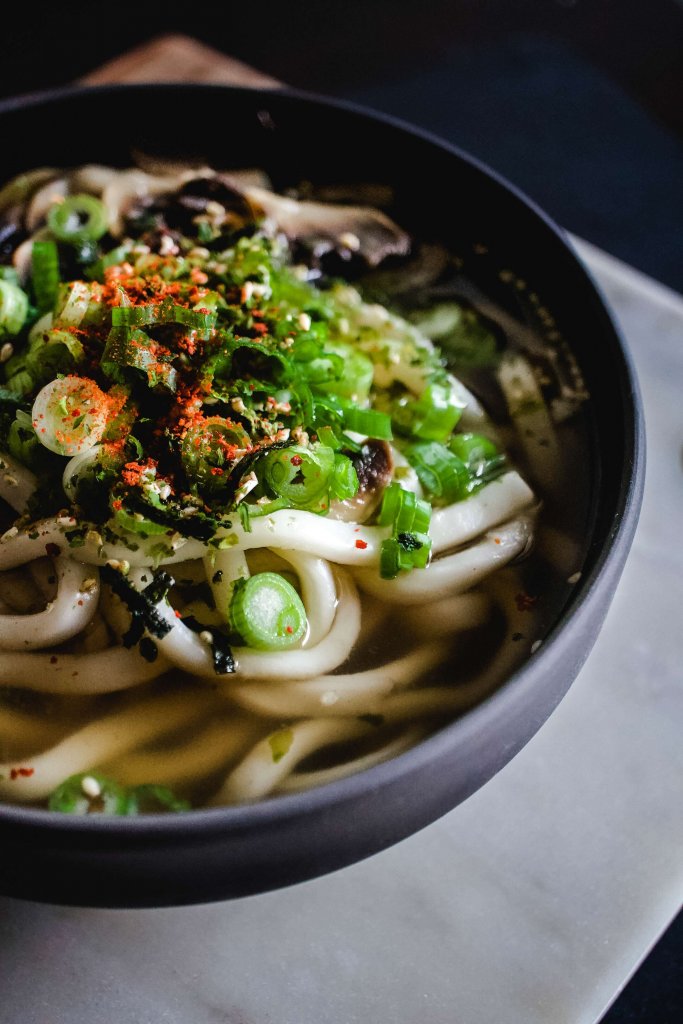
Rice Noodles
Rice noodles are a type of noodle made from rice flour and water. They are a staple in Asian cuisine and come in various shapes and sizes. Rice noodles are a great choice for anyone looking for a gluten-free option. They are naturally gluten-free and offer a mild, slightly sweet flavor. They are commonly used in a wide range of dishes, such as Thai, Vietnamese, and Chinese cuisines.
You can use rice noodles as a replacement for soba noodles, but there are a few things to consider:
- Rice noodles have a softer and smoother texture compared to soba noodles, which have a bit of a nutty and chewy quality. This difference in texture can affect the mouthfeel of your dishand may not appeal to everyone.
- Rice noodles are commonly used in Southeast Asian dishes like Pad Thai or Vietnamese pho. If you’re adapting a Japanese recipe, be mindful that the flavor profile might change a bit with the substitution.
- Rice noodles work well in a variety of dishes like stir-fries, noodle soups, and cold salads. They are particularly great for dishes with a lighter, sweeter sauce or broth.
So, in summary, you can use rice noodles as a substitute for soba noodles in many recipes, especially in Southeast Asian and fusion dishes. Just be aware that the texture and flavor might differ.
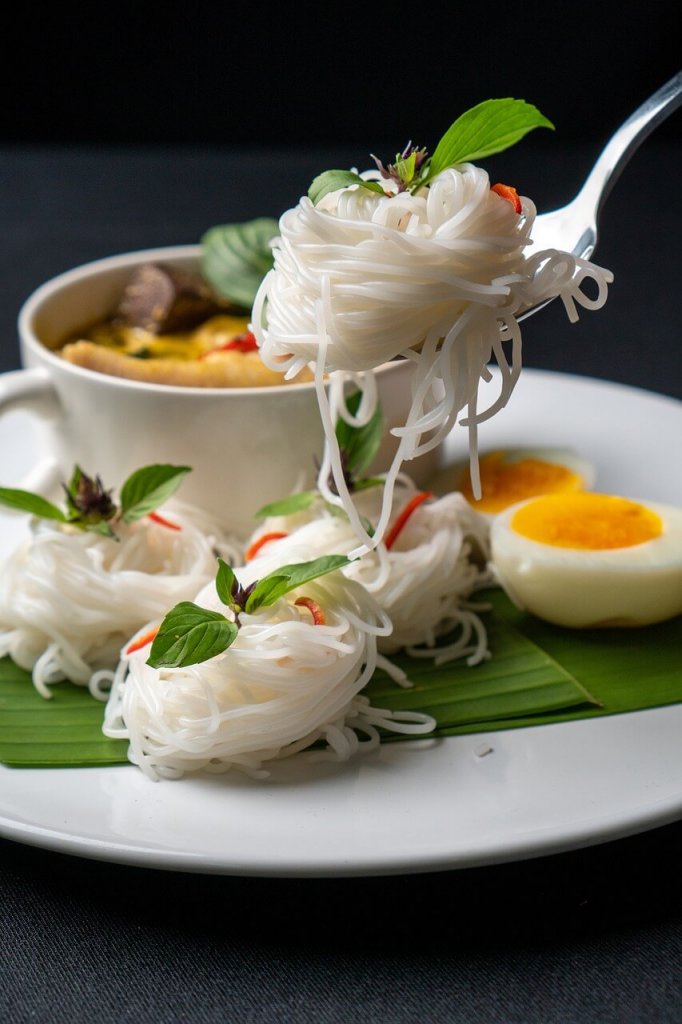
Zucchini Noodles as a substitute for Soba noodles
Zucchini noodles, often referred to as “zoodles,” are a popular low-carb and gluten-free alternative to traditional wheat-based noodles. Theyare made by spiralizing fresh zucchinis into long, thin strands that resemble pasta.
Zucchini noodles have a mild, slightly sweet flavor. This neutral taste makes them a great substitute as they can easily take on the flavors of the sauces and ingredients you pair them with.
Zucchini noodles also have a crisp and slightly crunchy texture, which contrasts with the softness of soba noodles. This can add a fresh and unique element to your dishes, but if you prefer a softer, chewier noodle, zucchini noodles may not be an ideal replacement.
Zucchini noodles work well in salads, stir-fries, and as a base for various sauces. They are particularly popular in dishes like zucchini noodle “spaghetti” with tomato sauce or pesto.
Zucchini noodles are a low-calorie and nutrient-rich option, making them a great choice for those looking to incorporate more vegetables into their diet.
Zucchini is seasonal, so the availability of zucchini noodles may vary throughout the year. This can be a consideration when planning your recipes.
Using zucchini noodles as a soba noodle replacement is a great option if you want to reduce carbohydrates or incorporate more vegetables into your dishes. Just keep in mind that the texture will be notably different, and zucchini noodles will bring a fresh, crunchy element to your recipes.
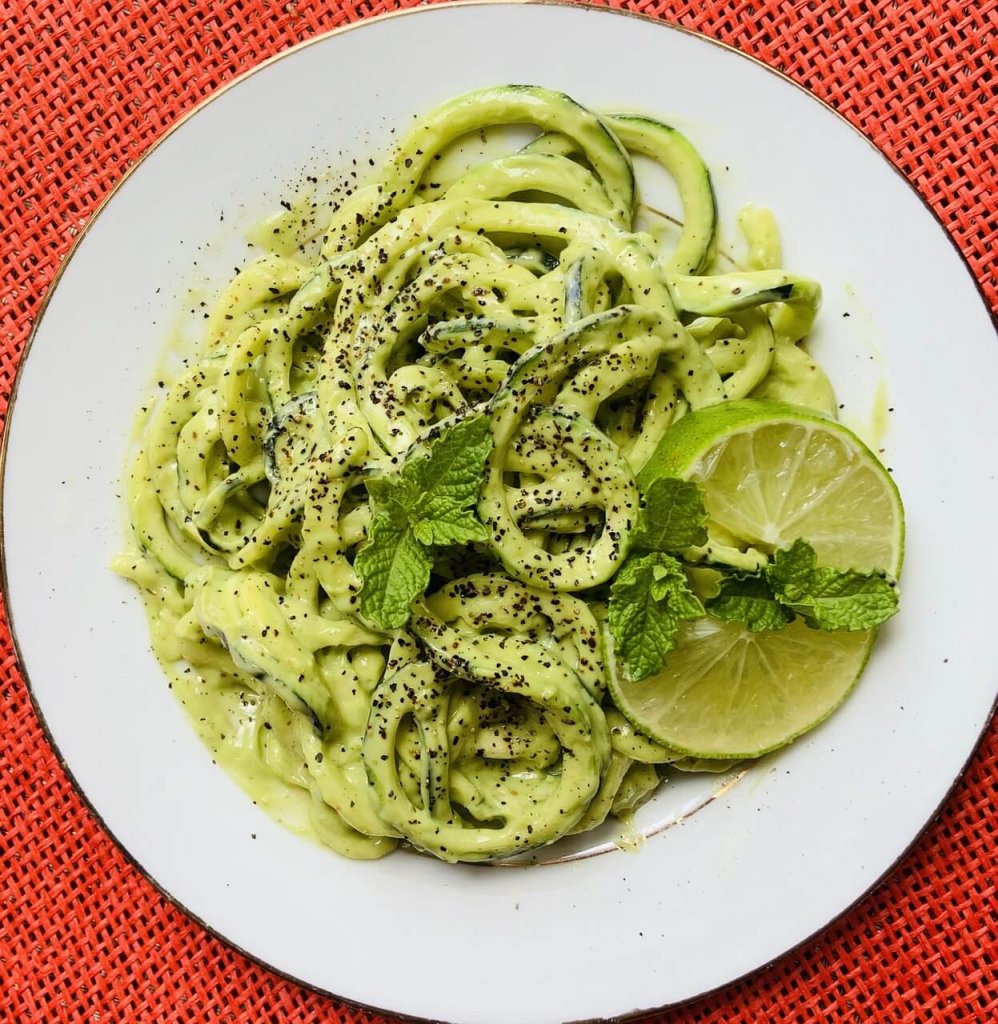
Somen Noodles
Somen noodles are a type of Japanese wheat noodle, typically very thin and white in color. They are often served cold, making them a refreshing choice for hot summer days. Somen noodles have a delicate, light texture and are traditionally enjoyed with a dipping sauce or in a cold noodle salad.
Somen noodles are incredibly thin and delicate, even thinner than soba noodles. Their thinness gives them a unique and delicate texture.
Traditionally served cold, they are a perfect choice for cold noodle dishes. They are often arranged in small bundles and accompanied by a dipping sauce, typically a soy-based sauce. They are a favorite in Japan during the hot summer months.
Somen noodles have a much lighter and delicate texture compared to soba noodles. If you enjoy a more delicate noodle, somen can be a great choice.
As mentioned somen is traditionally served cold with a dipping sauce, making it an ideal substitute for cold soba noodle dishes like zaru soba. Note, it may not work as well in hot noodle soups.
They have a mild flavor that pairs well with various sauces and toppings, allowing you to get creative with your recipes.
Somen noodles are also part of Japanese cuisine, so they align well with the cultural context of soba noodles.
In summary, somen noodles are a wonderful option to replace soba noodles in cold noodle salads or when you want a lighter, more delicate noodle experience. They bring their own unique charm and can be a delightful addition, particularly in warm-weather recipes.
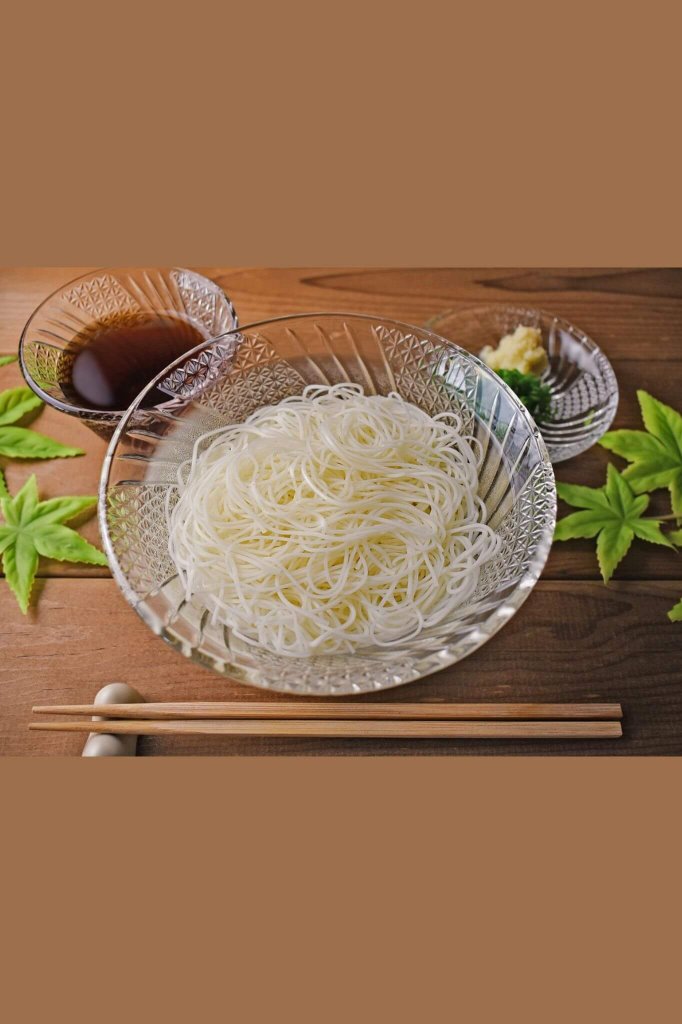
Spaghetti as a substitute for Soba Noodles
Spaghetti is a type of pasta that is long and cylindrical in shape. It is one of the most well-known and widely consumed types of pasta in the world. Spaghetti is typically made from durum wheat semolina and water, resulting in a versatile pasta with a neutral flavor. Use it in a variety of Italian and Italian-inspired dishes. Serve with a wide range of sauces, from marinara to Alfredo, or even dishes such as classic spaghetti with meatballs.
Spaghetti has a smooth and firm texture when cooked al dente, making it a great choice for holding onto sauces.
Spaghetti is a staple in Italian cuisine and has also become a beloved dish in many other parts of the world.
Yes, you can use spaghetti as a replacement for soba noodles, but there are some important considerations:
- Spaghetti has a different texture compared to soba noodles. While soba noodles have a nutty and slightly chewy texture, spaghetti is smooth and firm. This texture difference can impact the overall mouthfeel of your dish.
- Spaghetti is quite neutral in flavor, so it can easily adapt to a variety of sauces and ingredients. You can use it in both Western and fusion recipes.
- Using spaghetti as a soba substitute may lead to a fusion or cross-cultural dish, which can be exciting and innovative.
- Spaghetti is typically boiled, while soba noodles are often cooked and rinsed to remove excess starch. Consider this when adapting a recipe.
In summary, you can use spaghetti as a substitute for soba noodles in various recipes, especially when you want a pasta dish with a different flavor and texture profile. Keep in mind that the texture and cultural context may differ, so it’s important to consider the specific recipe you’re working on and the flavor combinations you want to achieve.
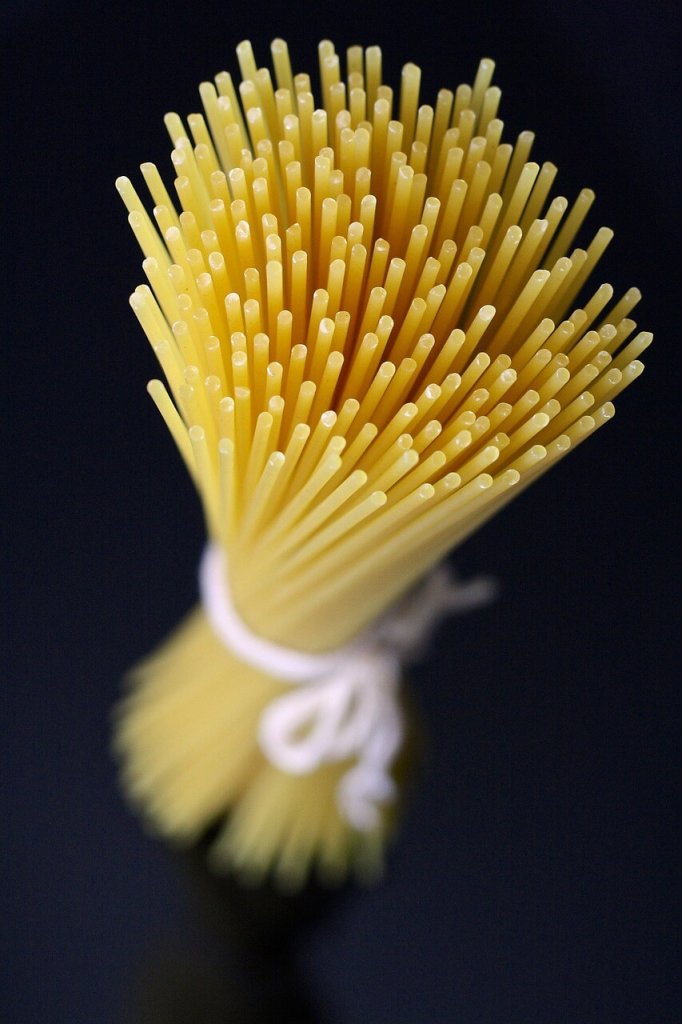
Shirataki Noodles
Shirataki noodles, often known simply as “shirataki,” are a type of low-calorie and low-carb noodle made from konjac yam or a combination of konjac flour and calcium hydroxide. They are translucent and have a gelatinous texture. These noodles have gained popularity as a low-calorie and gluten-free alternative to traditional wheat-based noodles.
Shirataki noodles are extremely low in calories and carbohydrates, making them a suitable choice for those on a calorie-restricted or low-carb diet. They are also gluten-free, which makes them an excellent option for individuals with gluten sensitivities or dietary restrictions.
Shirataki noodles have a unique texture that is somewhat gel-like which everyone might not like. They also don’t have the same chewiness as soba noodles.
You can use shirataki noodles as a replacement for soba noodles in some situations, but there are important factors to consider:
- The texture of shirataki noodles is quite different from soba noodles. They are slippery and gel-like, which might not be to everyone’s taste. If you enjoy a chewier noodle, shirataki may not be the best option.
- Shirataki noodles work well in dishes where the texture isn’t a primary concern, such as in soups or stir-fries. However, they might not be the best choice for cold noodle salads due to their gel-like consistency.
- Shirataki noodles readily absorb the flavors of the sauces and ingredients they’re cooked with, so they can work in a variety of recipes.
- Their low calorie and carbohydrate content make them a great choice for those looking to manage their calorie intake.
In summary, shirataki noodles can be used as a soba noodle replacement in certain dishes, particularly those with hot broths or stir-fries, where the unique texture of shirataki may not be as prominent. Keep in mind that the texture is quite different, so it may not be the ideal choice for all soba noodle recipes. However, they can be a valuable addition and act as a low-calorie and low-carb alternative.
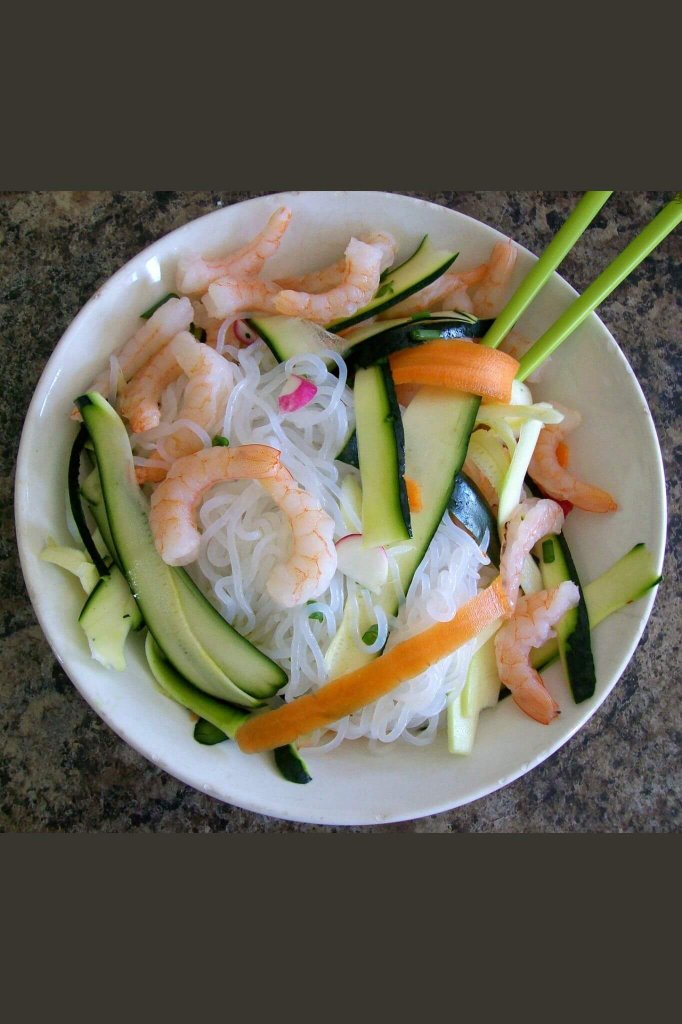
Buckwheat Pancakes
Buckwheat pancakes are a type of pancake that you make with buckwheat flour, which is a nutritious, gluten-free flour. The flour has a robust, nutty flavor that gives the pancakes a unique taste. Note, they are slightly denser than regular pancakes due to the absence of wheat flour.
Buckwheat is a whole grain rich in nutrients, including fiber, protein, and various vitamins and minerals. This makes buckwheat pancakes a healthier choice.
You can enjoy buckwheat pancakes for breakfast, especially when served with sweet toppings like maple syrup, honey, or fresh fruit.
Buckwheat pancakes are not a common replacement for soba noodles, mainly due to the differences in preparation, texture, and intended use. However, there are situations where you might use them creatively:
- Buckwheat pancakes have a very different texture and shape compared to soba noodles. Pancakes are soft and often have a round shape, while soba noodles are thin, long strands.
- If you have buckwheat pancakes and want to create a unique dish, you could slice them into thin strips to resemble noodles. They might work as a creative substitute in certain recipes, but the taste and texture will be quite distinct.
- Buckwheat’s nutty flavor can be an interesting addition to your recipes, but it may not be a perfect match for all types of dishes.
In summary, while you can get creative and use buckwheat pancakes as a unique and unconventional substitute for soba noodles, they are not a traditional or common choice. The differences in texture and shape may impact the final dish’s overall experience. However, experimenting with them in your recipes could result in exciting and unexpected flavors and textures for you to enjoy.
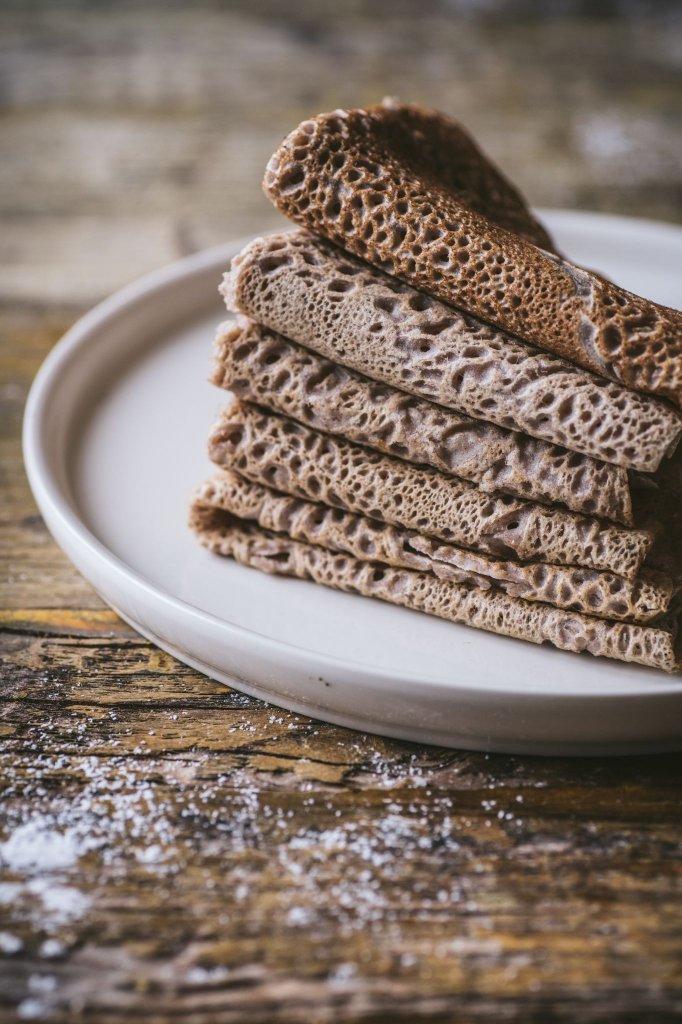
Summary for Soba Noodle substitutes
Okay – that’s you all sorted with suitable substitutes for soba noodles.
Choose whichever you feel will work well as a replacement for soba noodles – and enjoy. Here’s a quick recap:
- Udon Noodles: Udon noodles are a thicker and chewier Japanese noodle, often made from wheat flour. They can be a good replacement for soba noodles in many dishes.
- Rice Noodles: Rice noodles, like vermicelli or flat rice noodles, work well as a gluten-free alternative to soba noodles. Use in Asian cuisine, especially in dishes like Pad Thai.
- Zucchini Noodles (Zoodles): If you’re looking for a low-carb and gluten-free option, zucchini noodles make a fantastic substitute. You can spiralize zucchinis and use them in place of soba noodles in cold salads or stir-fry dishes.
- Somen Noodles: Somen noodles are very thin wheat noodles, often served cold in Japan. With a delicate texture you can use them in a similar way to soba noodles.
- Spaghetti: In a pinch, you can use spaghetti as a substitute for soba noodles. Choose spaghetti made from wholewheat. They won’t have the same flavor or texture, but they can work in a pinch for noodle-based dishes.
- Shirataki Noodles: Shirataki noodles are low-calorie, low-carb noodles made from konjac yam. They are translucent and work well in soups, stir-fries, and salads.
- Buckwheat Pancakes: If you’re out of soba noodles and have some buckwheat flour, you can make buckwheat pancakes and then slice them into strips to use as a noodle replacement.
We have gathered together a lot more facts on ingredients such as herbs, spices, oils, nuts, etc. if you would like to learn some more.
Or if you need to swap out another ingredient have a look at our Substitutes section.
